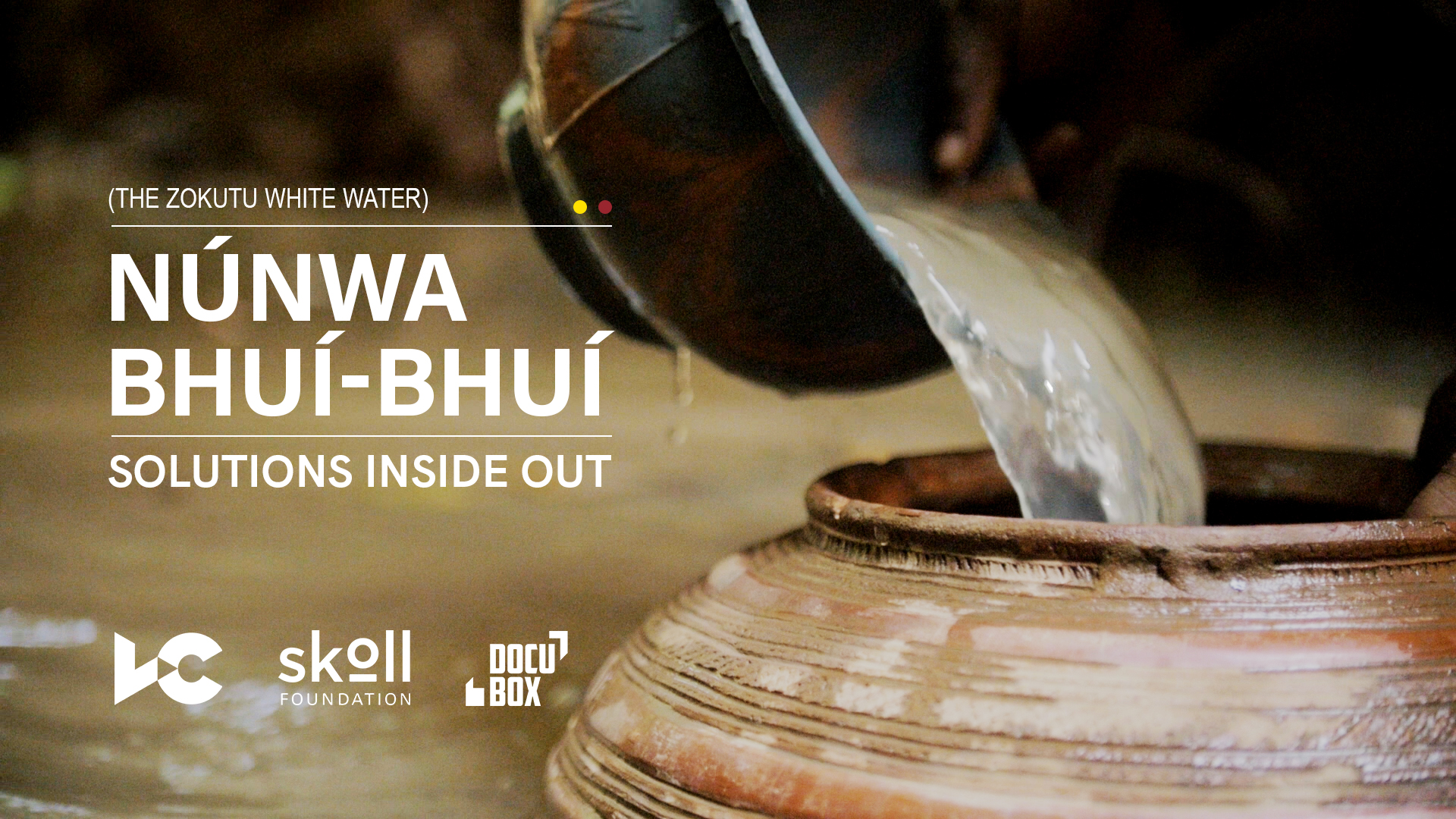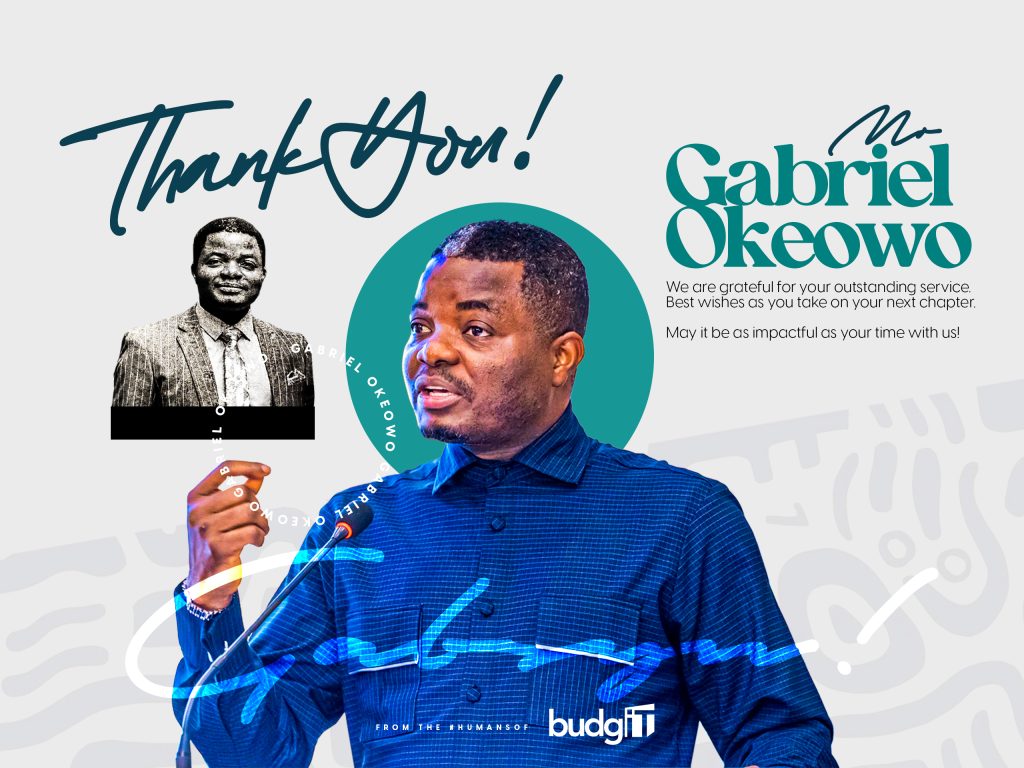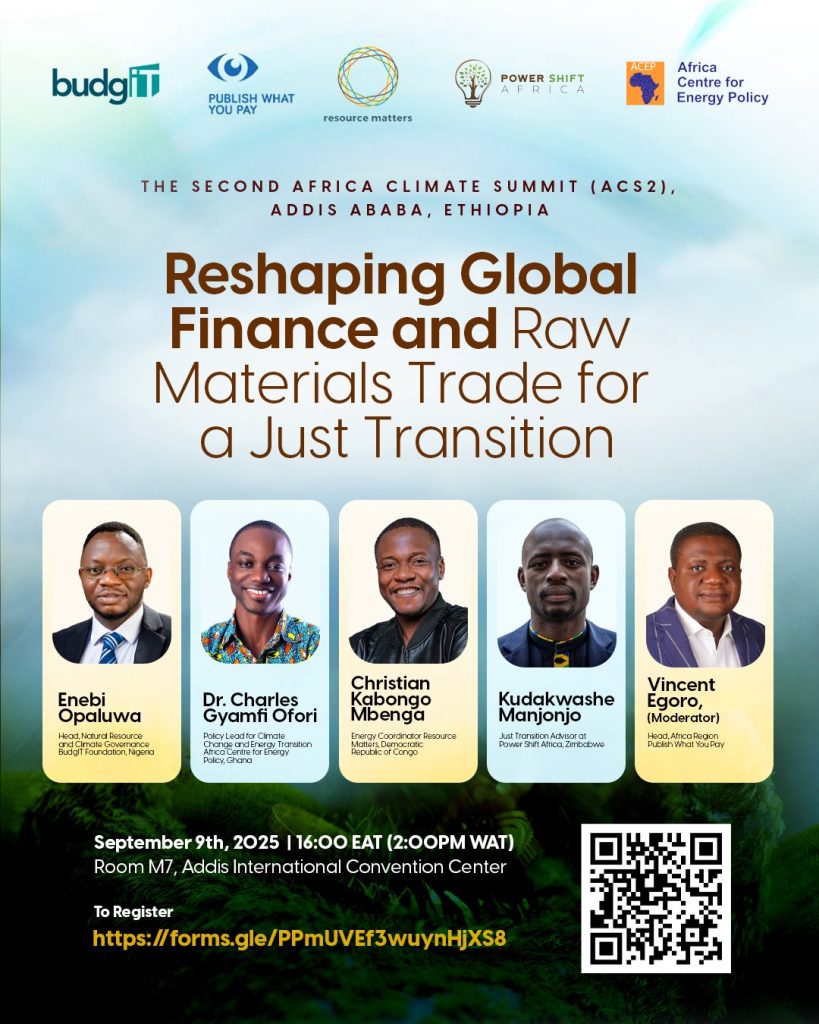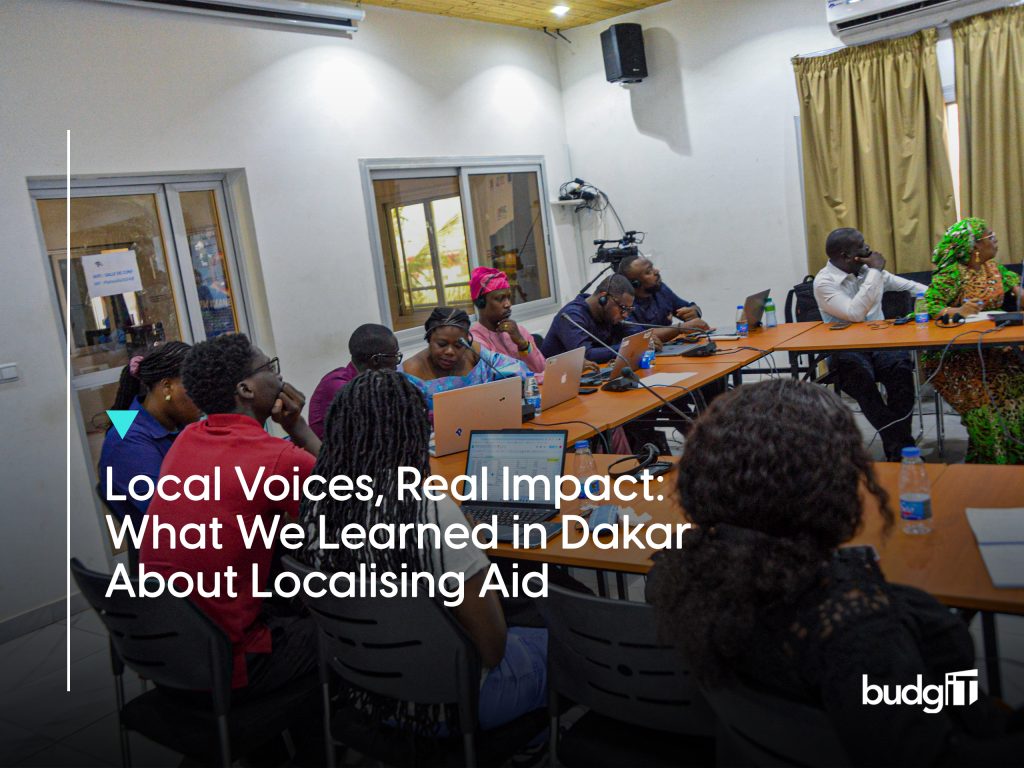Stories are powerful, and more than ever, the need for civil society organisations to take the lead is more pronounced as a means to capture the hearts and interests of donors and stakeholders. While the dimensions and how to tell a story can seem farfetched, it is not a rock-science task if an organisation is backed by a team of creative minds. And if there is one thing BudgIT has learned to do well, it is having the best and most creative minds in the civic space.
This time, BudgIT took the bull by its horns by releasing a brilliant work that captured less than one per cent of its giant stride in the last thirteen years of operation.
Sometime last month, it premiered its first documentary film, The White Water, at Civic Hive, Yaba, Lagos, Nigeria. The docu-film, which is best described as emotionally captivating, tells the story of Zokutu, one of the communities that BudgIT’s impact work has reached in recent years and their forty years of struggle with water. Without dropping spoilers, you can stream the film on our YouTube channel.
One African proverb says, “A tree does not make a forest.” The Zokutu project has been one such work where collation is needed. In this case, it is a collaborative work between BudgIT and Tracka (its service delivery platform). The team that worked to make this a reality includes Franklin Adegbie (documentary filmmaker)—director, Ugochukwu Nweke—assistant, Oladayo Olufowose—aerial shots (drone) coordinator and post-production motion graphics, Nancy Odumegwu—story consultant, former head of Tracka, Uadamen Ilevbaoje helped identify the story to tell, Joshua Osiyemi—Tracka Program Officer, Abdullahi Garba—Tracka, Abuja project tracking officer, Oluseun Onigbinde—BudgIT’s Global Director, Caroline Anintah, his assistant. In this article, we catch up with some of the team members, or should we call them crew members, as they share their exciting experiences and the insight behind this project as part of BudgIT’s commitment to telling its stories.
The Challenge: Discovering Zokutu Community Need – Ayomide Ladipo, Head, Tracka
“It all started when Abdullahi Garba, Tracka’s state officer in FCT, Abuja, discovered the community’s challenge through his several community engagements. Initially, they were reluctant to speak with him about their challenges because they’d had many visits from different organisations and the government that didn’t yield results. Fortunately, he understood and spoke their language, so they finally let down their guard and listened to him and afterwards took him to where they got their water, which was a terrible place. He took pictures and videos of the place and sent them to me at the office (back then, I was the content writer and storyteller for Tracka).
“When I saw his report, I knew we needed to do something about it and consolidate it with other media to get a wider reach. So we contacted the Cable Newspaper, which published the story about the community. After that, we pushed some calls and took necessary actions. Some months later, Garba notified me that someone from the Bank of Industry and the Office of Senator Philip Tanimu Aduda wanted to support the community.
“All these happened in 2021, and by January 2022, the community had running water. It was a great joy for us, which we thought should be documented as a story to capture how the absence of a basic need as water can affect people’s lives (where women’s lives are put on hold, girls can’t go to school when on their period, children missing schools because of water, etc). This may look trivial to outsiders, but it was an effort that has changed their lives. So when our Global Director asked for recommendations for a documentary of our work, this story was the easiest to pick.”
The Making of A Worthy Story – Nancy Odimegwu, Communications Officer, BudgIT
“Before we went on set, we researched the story to ensure we had the right one (that would appeal to the audience and speak to our effort in advocating for service delivery at the grassroots). I contributed to the storyline and edited where necessary. Working with Garba from Tracka, we translated every language that wasn’t English for the story amid stops and long pauses to listen and grasp the context. This happened in our lodge.
Working on this project meant playing the role of a story and documentary consultant, if there is such a thing. Shooting is one thing, but the build-up to the production—preparation and logistics—is an entire body of work that takes a lot of effort.
It was an exciting experience to be part of this story because most people think what we do in the organisation is only numbers and yearly impact reports showing five thousand or so impacted communities. It was a privilege to document our work differently and take our audience through the journey of how the result of one of those five thousand or so communities was achieved. I enjoyed working with the team and learned a lot from Frank Adegbie, the documentary filmmaker given to us by the donor—Skoll Foundation.
At the end of each shoot, we climbed a mini mountain to take shots and pictures and did our best to experience different scenes on set. It was something bigger than what I was used to as a communications specialist and creative producer. Moreover, I love Frank’s storytelling technique without using a voice-over.
One of the challenges we faced was a language barrier, which wasn’t so pronounced because Zokutu people understood a little English, and we had someone constantly interpreting. We couldn’t speak their language (literally) but did our best to get an interpretation where necessary. Aside from that, the community refused to accept us initially, saying we weren’t the first and wouldn’t be the last set of NGOs, missionaries, or government officials promising them good water.
After cycles of endless promises that go halfway and get dashed, their initial attitude was justified. Shockingly and for good, we’re the last since we got the job done once we eased their fears and got to work. Ultimately, we had full cooperation from the community head to the community members to the children, and even the atmosphere aligned with us.
It was exciting to put smiles on their faces after forty years, and there were very emotional moments where we couldn’t help but shed tears. Going down to their mini river or stream, where they fetched the brown water, was fun because the location was quite steep. You’d ask yourself, if mothers and their aged children can navigate it easily like warriors and come up like soldiers, why can’t I go down there?”
Oladayo, Olufowose – Head of Communication, Media and Creatives, BudgIT
“It was an experience of a lifetime. I coordinated the aerial (drone) shots and ran some motion graphics for the post-production. I personally enjoyed working with Frank, the director. The production gave me the opportunity to work closely with one of Nigeria’s finest videographers and see his movie-making process.
On the shoot day, we drove almost two hours from Abuja town to the location without any security and were even threatened at the location for coming alone. We also had to ensure our equipment were charged because there was nowhere to plug them in the village.
It was amazing knowing that I could tell stories of our efforts in community development using my devices as a creative.”
Using Storytelling to Promote the Work of CSOs – Nancy Odimegwu, Communications Officer, BudgIT
For most CSOs, storytelling is a new experience with learning curves to overcome. A worthwhile experience, such as the Zokutu story, allows communication experts, multimedia designers, researchers, and behind-the-scenes crew to experience first-hand the real and raw emotions of the people they serve, as shown in Nancy’s recount.
By switching to telling stories about their work, civil society organisations can allow their creative talents to unlearn old concepts and relearn new ones, which can fundamentally elevate an organisation’s perception and give credence to its efforts.
CSOs can leverage storytelling to immerse themselves in the communal living of the communities they serve. They can watch how their lives play out from sunrise to sunset while spending days with them working on documenting their change story. This produces a human angle, empathy, and an emotional experience that leads to a stirring desire for action, which is necessary for every charitable work. By understanding the pain of a people through immersion, working to improve their situation takes centre stage in community officers’ minds.
“It was an emotional experience because there was a time when we went to shoot the burial ground, and the main actor (Jubril Mudu) was telling us everything we were seeing was all burial ground where his child and his brother’s child were laid. It was at that moment we realized we were standing on a landmine, not of explosives, but of bodies and skeletons who had passed from one illness or deprivation. That experience made me understand that there is more to life. While living, one should try to leave their footprints in the sand of time.” – Nancy Odimegwu
CSOs’ works are often tied to numbers, press statements, and the like without feeling the impact of their efforts. When citizens feel the work of CSOs, it opens a window to understand the real effort that transpires behind the camera from a different perspective. Using storytelling to communicate the enormous process that goes into every CSOs’ executed project or successful cause or campaign helps put the public in their shoes to feel what they felt as against issuing a press statement. This makes storytelling a tool for bridging the gap between a CSO’s laid-down identity and public perception.
Storytelling brings a whole new world that people don’t see on paper to the viewers or citizens who would ordinarily stay aloof. Facts and figures can’t cut it; issuing press releases cannot spur the depth of action that storytelling inspires in audiences, even if only in reenacting the original story. Story has its game and stands as the one trusted means to transport an audience into the reality of what they can see (capturing and reenacting moments) and transform them to act on the storyteller’s desire.
Lastly, considering the myths and facts surrounding attention span these days, pushing CSOs’ works in formats that stick with their audience’s minds benefits them by attracting their audience’s attention (especially the younger demographic) and creating a connection (bond of understanding) between them because what we see sticks more and leaves a lasting memory. Using storytelling, stakeholders and the audience can understand and appreciate the volume and impact of CSOs efforts and agree that if given more resources, they can do better.
From Here Out
While this is a first for BudgIT, it was warmly received by viewers at its premiere. Even more, as the world keeps changing, BudgIT is of the utmost opinion that storytelling is a great vehicle to reflect the works of civil society and the contributions of citizens and activists to reshaping communities in Africa. We, therefore, are committed to this new (although old as the human race) thing and wish to call on well-meaning civic actors to embrace it for their own visibility and advancement.
For now, we draw the curtains and keep our fingers crossed for the next story BudgIT will pop up for its audience to marinate over. Ultimately, we all are responsible for putting smiles back into the world, especially in places that are hard to reach, like Zokutu and so on. Do your part and keep the stories alive.



